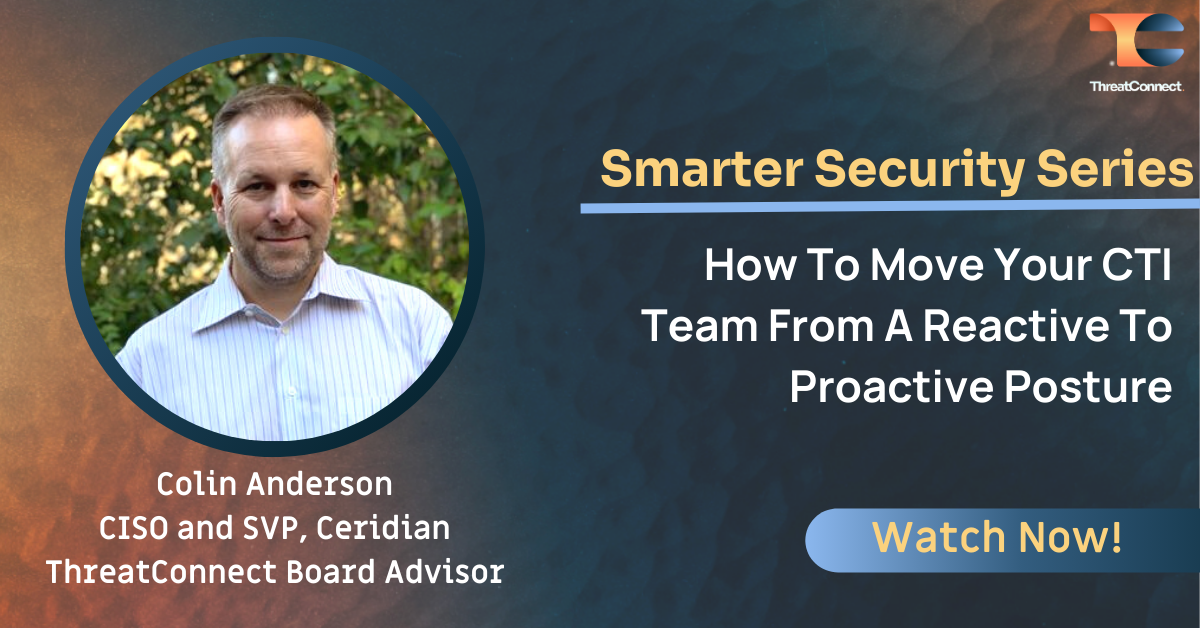World-renowned Cybersecurity Executive Colin Anderson, recently sat down with Toby Bussa, VP of Product Marketing at ThreatConnect. Anderson is the Senior Vice President and CISO at Ceridian, a top HR Management Software company. With a vast and impressive career, Anderson has also held high-ranking roles at Levi Strauss and Safeway. Besides actively working in the field, he also serves as a Board Advisor for multiple Cybersecurity firms and is an investor.
The conversation kicked off with Anderson elaborating on his extensive experience in building robust cybersecurity systems for major companies. His attraction to the cybersecurity field is based on its ever-evolving nature, which provides him with constant learning opportunities. His philosophy revolves around the idea of ceaseless growth and development.
The discussion took a deeper dive into the technicalities of cybersecurity when Anderson was asked about the approach businesses need to take to move from a reactive to a proactive defense. Anderson’s response highlighted the importance of considering a wider lens when it comes to data sources. Often, businesses limit themselves by merely focusing on internal data, but this gives them only half the puzzle.
To gain a complete understanding of the threats and risks, organizations need to look beyond their internal data and incorporate external threat intelligence into their security framework. Doing so not only boosts their security operations center (SOC) team’s effectiveness but also considerably improves their mean-time-to-detect (MTTD) and mean-time-to-respond (MTTD).
In Anderson’s experience, integrating external threat intelligence with internal data has consistently helped organizations shift from a reactive to a proactive approach, effectively increasing their level of security.
In conclusion, the conversation shed light on the practicality of utilizing both internal and external data sources to unlock a comprehensive understanding of threats. According to Anderson, this approach arms businesses with all the necessary variables needed to make the right decisions, thus helping them to focus on the appropriate areas and level-up their organization.
